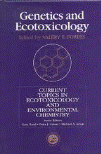Papers in the Biological Sciences
Date of this Version
2008
Abstract
Mixture toxicity of similar- and dissimilar-acting toxicants can be predicted by the models concentration addition (CA) and independent action (IA) using single substance toxicity data. Knowledge of the toxicants mode of action is thus required in order to use the models. In order to test the predictive capability of the models, we conducted Daphnia magna 48 h immobilization experiments with three toxicants with known modes of action (dimethoate, pirimicarb and linear alkyl benzene sulfonate) singly, and in binary and ternary mixtures. Our results indicate that CA and IA predict binary mixtures of similar- and dissimilar-acting toxicants equally well. CA and IA also equally predicted the ternary mixture consisting of both similar- and dissimilar-acting chemicals. The paper discusses the concept of mode of action and the implications the definition of mode of action has on the choice of reference model for mixture toxicity studies.


Comments
Published in Ecotoxicology and Environmental Safety (2008) 69: 428-436. Copyright © 2008 Elsevier Inc. Used by permission. DOI: 10.1016/j.ecoenv.2007.05.010.